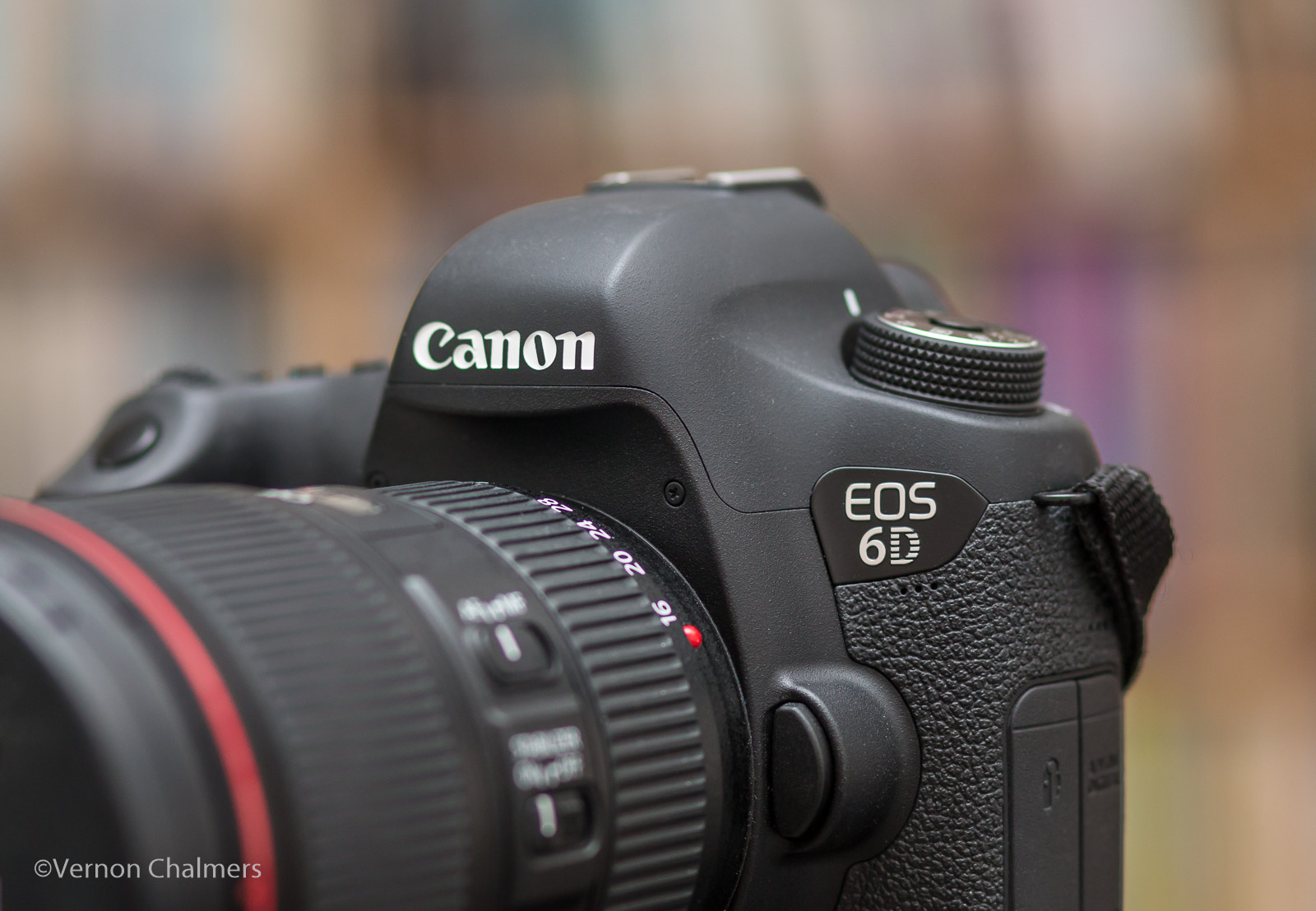
The edges are cropped off, which is equivalent to zooming in on the center section of the imaging area. When a lens designed for a full-frame camera, whether film or digital, is mounted on a DSLR with a smaller sensor size, only the center of the lenses image circle is captured. If the lens mounts are compatible, many lenses, including manual-focus models, designed for 35 mm cameras can be mounted on DSLR cameras. This equates to 10K horizontal resolution in full-frame size. Kodak states that 35 mm film (note: in " Academy format", 21.0 mm × 15.2 mm) has the equivalent of 6K horizontal resolution, according to a senior vice president of IMAX.

Historically, the earliest digital SLR models, such as the Nikon NASA F4 or Kodak DCS 100, also used a smaller sensor. Many digital cameras, both compact and SLR models, use a smaller-than-35 mm frame as it is easier and cheaper to manufacture imaging sensors at a smaller size. The full-frame DSLR is in contrast to full-frame mirrorless interchangeable-lens cameras, and DSLR and mirrorless cameras with smaller sensors (for instance, those with a size equivalent to APS-C-size film), much smaller than a full 35 mm frame. Historically, 35 mm was one of the standard film formats, alongside larger ones, such as medium format and large format. Many Canon DSLRs have a microphone connection port that allows you to record high-quality audio, too.The sizes of sensors used in most current digital cameras, relative to a 35 mm formatĪ full-frame DSLR is a digital single-lens reflex camera (DSLR) with a 35 mm image sensor format ( 36 mm × 24 mm). Some Canon DSLRs even offer 4K recording resolution. At minimum, you will be able to shoot full HD resolution video. With a large image sensor and a fast processor, you can shoot good movie-quality videos using a Canon DSLR. One of the biggest improvements DSLR cameras have made in the past decade involves the ability to record high-end video. Can I shoot video with a Canon DSLR camera?Ī. The EF mount will accommodate any EF lens and any EF-S lens.Īs long as your other camera lens is able to fit the lens mount on your Canon DSLR camera, it should be compatible. The EF-S mount only accepts EF-S-compatible lenses. Canon offers two lens mounts with its DSLRs: the EF mount and the EF-S mount. The type of lens mount included on your DSLR camera determines which types of lenses it may use. Can I use lenses from prior models with a new Canon DSLR camera?Ī. If you were to buy a camera-body only Canon DSLR, you’d have to provide your own lens, as one would not be included in the box. Using the kit lens, you can begin shooting photos as soon as you receive the camera. The kit lens is a basic lens that’s compatible with the DSLR camera. One of the most common options involves purchasing the DSLR with a kit lens or two. Canon offers its DSLR cameras for sale in a couple of configurations. Why did my Canon DSLR ship with a kit lens?Ī. You’ll need a memory card and a camera bag, too. Purchasing a tripod provides an ability to hold the Canon DSLR steady for certain types of photos. You also may want to purchase accessories such as an external flash unit that attaches to the DSLR hot shoe. Different lens options provide more versatility in the types of photos you can shoot. As your photography skills grow, you will probably want to add more lenses to your collection. What are some hidden costs of Canon DSLR cameras?Ī. You’ll love the versatility of a Canon DSLR, as it can use numerous interchangeable lenses to gain more features. Full-frame image sensorsĪ full-frame image sensor is used in high-end Canon DSLR cameras, as this type of image sensor offers the best image quality.Ī full-frame image sensor approximates the size of a frame of 35mm film, measuring 36 mm x 24 mm. In fact, image sensor size directly correlates with how well the DSLR camera performs in poor lighting.Ĭanon DSLR cameras offer two types of image sensors: full frame image sensors and APS-C image sensors. It turns those light measurements into digital data that a computing device uses to recreate the image on a screen.Ī physically larger image sensor will measure light more accurately than a smaller image sensor. The image sensor measures the intensity and color of the light traveling through the lens.

Think of the image sensor as the equivalent of film in a previous model. The image sensor is the key component of a Canon DSLR camera. A Canon DSLR camera borrows a large part of its interior component design from previous models of Canon 35mm film cameras.


 0 kommentar(er)
0 kommentar(er)
